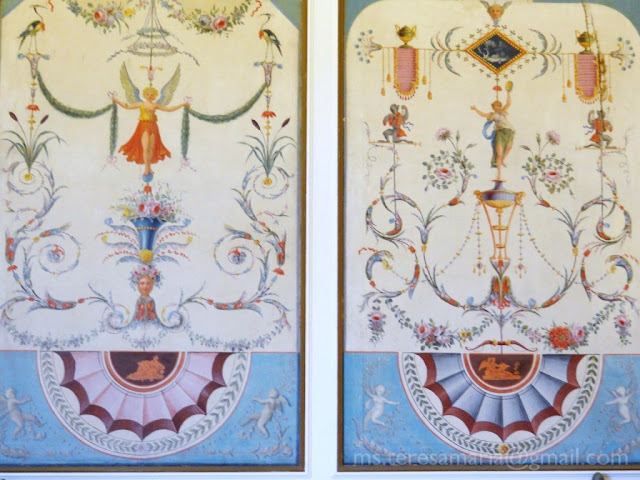When you have a spectacular site of 7 hectares (17 acres) in the Mediterranean, the means of a millionaire and the mind of a true aesthete how could you possibly settle for one garden? Baroness Béatrice Ephrussi de Rothschild had travelled extensively and seen different kinds of gardens around the world. So she set her mind on creating all her favourite gardens to complement the dream palace she built on the peninsula of Cap Ferrat about 10 kilometres to the east of Nice.
The most fabulous of the nine gardens of the Musée Ephrussi de Rothschild is the formal French garden that faces the Villa and was designed to
resemble a ship’s deck. There is a canal in the middle with ponds, lawns, large
flowerbeds, trees and other plants, antique statues and urns, etc, arranged symmetrically on both sides. The
canal leads the eye to the Temple of Love that serves as the focal point representing
the bow in the ship-like shape.
The rest of the marvelous gardens are
built on the hillside to the west and south of the French garden. There is a
Spanish, Florentine, Japanese, Exotic and Provencal garden plus a Stone garden
with arches, reliefs and other large items that could not be used inside the
Villa, and a garden with Sèvres porcelain pieces. (Sorry, no photos of them all. It was too hot and most of the time there would have been too many people to spoil the view anyway.)
A guided path leads through
the area towards what is probably the second most photographed of the gardens,
the roseraie at the far end of the site. A small stone temple overlooks the Rose
garden that boasts more than a hundred varieties.

Even without the exotic birds, flamingos, gazelles, antelopes, monkeys and other wild animals Béatrice used to have on the grounds, the gardens of Villa Ephrussi de Rothschild are such an endless pleasure to your
senses you could stay there for hours admiring the changing landscape as you
walk along the path, every now and then turning your eye to the breathtaking
views towards the sea. Should you be a garden enthusiast you will wish you could stay
there forever.
This was my fifth proper holiday in and around Nice but for some curious reason I never made it to the Villa before. I will definitely return one fine spring day, most likely in April or May, to witness an even greater abundance of blossoms. Who knows, I may have turned into a bit of a gardener by then in which case I would enjoy the enchanting place even more than the pure amateur stepping the stones a few weeks ago.
Have a look also on my two previous posts on the magnificent Villa and its interior.






















































